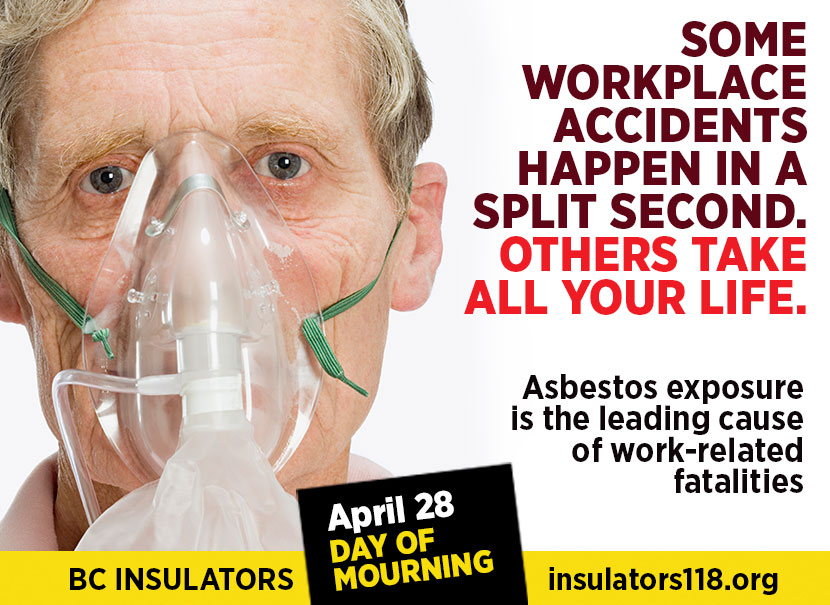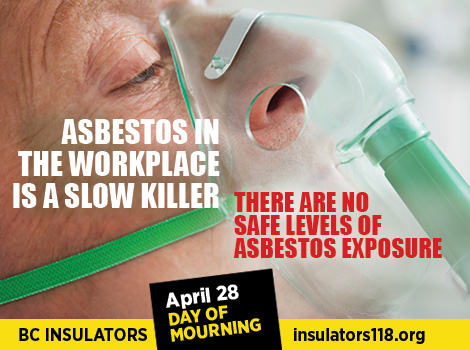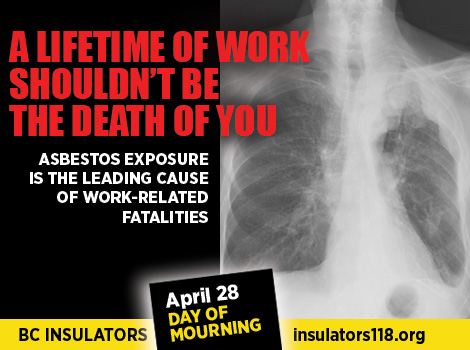Fighting against death and injury on the job

None of us expects to go to work and not come home. But an average of three Canadian workers are killed on the job each workday. In BC, 182 workers lost their lives at work in 2015.
Today – April 28 – is the International Day of Mourning for Workers killed and injured on the job. The call to action is “Mourn for the dead. Fight for the living”.
To mark the day we helped one of our clients – Heat and Frost Insulators Local 118 – develop a series of shareable social media graphics targeting asbestos which is the single largest cause of workplace-related death.

What’s a little different about this message is that mesothelioma, the cancer caused by asbestos, is a slow disabler and killer. We often think of workplace injuries and deaths as sudden and violent, like the three construction workers who fell from Vancouver’s Bentall Tower in 1981, or the ironworkers who died building the Second Narrows Bridge.
We wanted to challenge this image, showing that toxic exposure in the workplace is just as deadly. It can also be more difficult to identify, challenge and change. Disease sometimes happens years after exposure, and workers, unions and health professionals have to fight to prove the damage and prevent it from happening to other workers.

Asbestos use in industry was phased out over the 1980s, but workers who were exposed to it in their younger years are suffering the long term effects. Asbestos is still present in many older homes and buildings. Asbestos mines continued to operate in Quebec until 2012. And despite awareness of its dangers, Canada still permits imports of asbestos-containing products such as brake pads and heating pipes.
The Canadian Labour Congress has developed a campaign to ban asbestos, that includes calling for: a ban on the use, export and import of all asbestos-containing materials, a registry of all public buildings that contain asbestos, and a comprehensive health response including increased early detection and treatment. Find out more on the CLC site
For more information on the National Day of Mourning, visit the Canadian Centre for Occupational Health and Safety.
And if you have time for a long read, we recommend this special report in the Globe and Mail .
